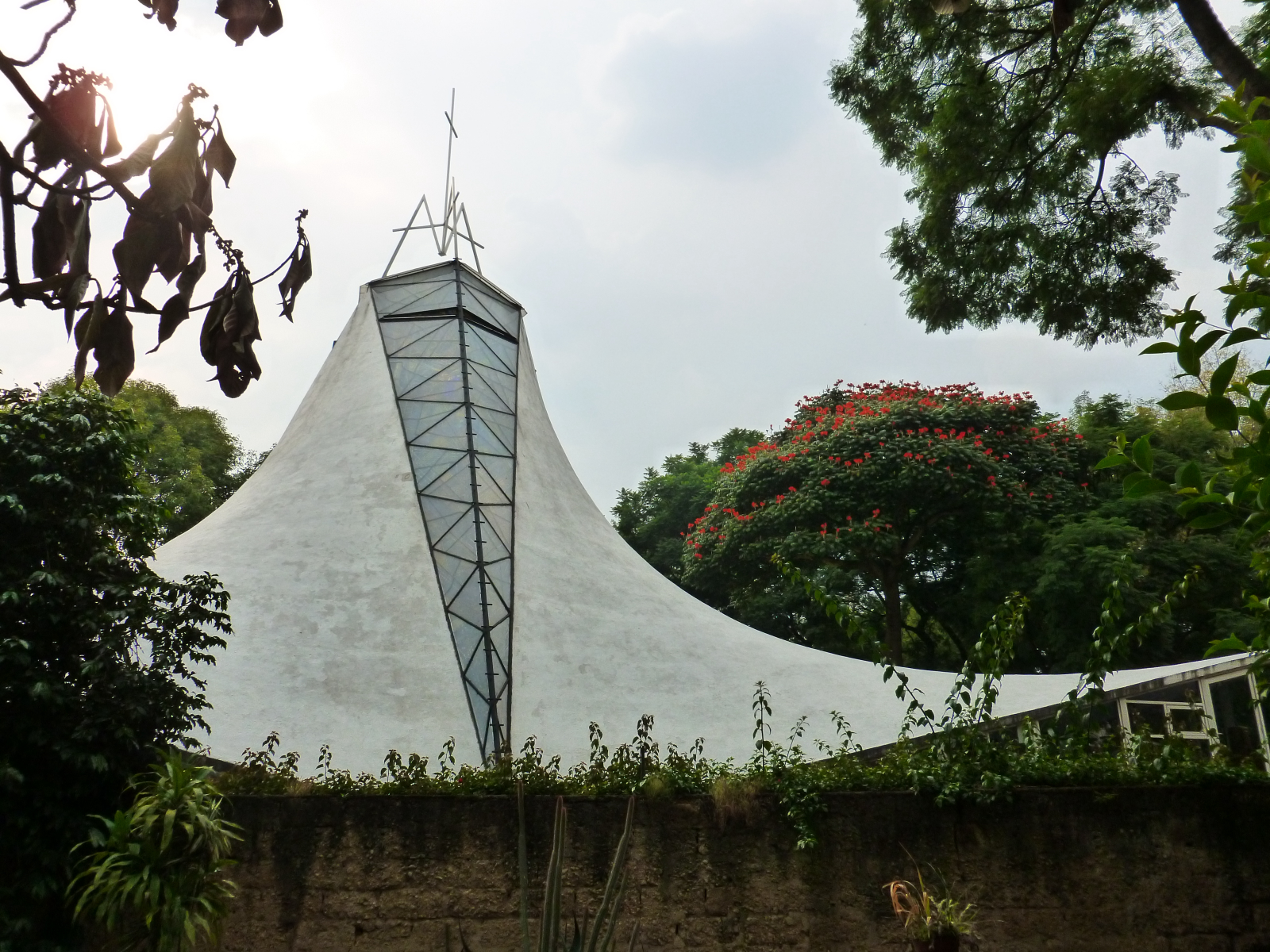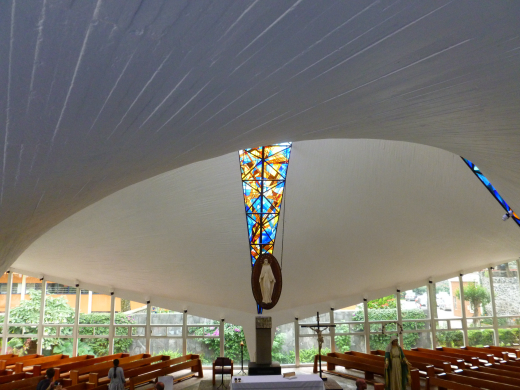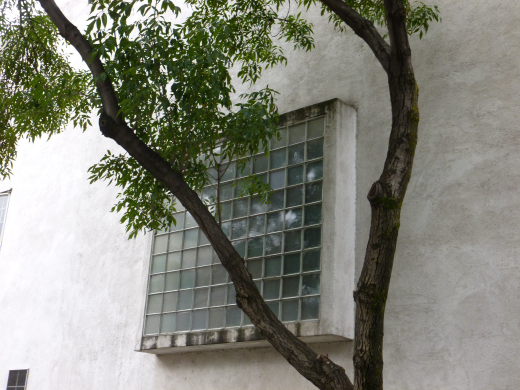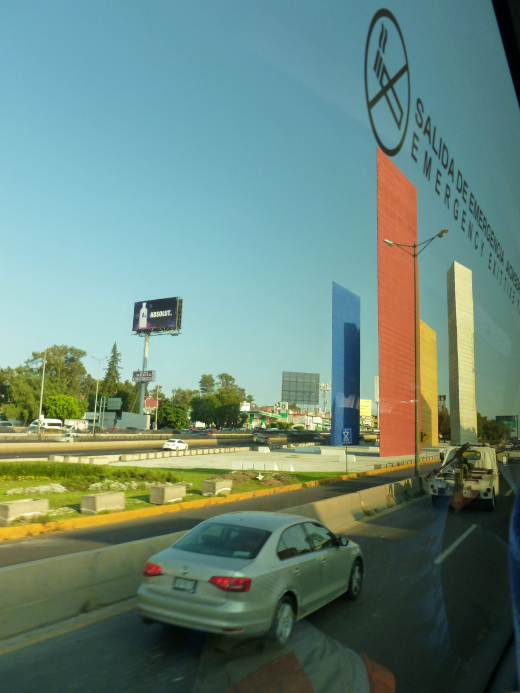Located nearly 7,400 feet above sea level and built on the ruins of an ancient civilization, Mexico City was one of the most resilient and vibrant cities I have experienced. The trip was planned around the diverse architectural history of the region, and I found myself in the company of individuals that shared the same passion for modern architecture. Arriving shortly after a major earthquake shook the city and leaving as the city prepared for the Día de Muertos celebrations, I left with much to contemplate.
Reflections on Mexico City
Author
Sarah Sojung Yoon
Tags
When I found out I was selected for the Docomomo US – Mexico City Study Grant, I was working as a graduate intern on the Conserving Modern Architecture Initiative (CMAI) at the Getty Conservation Institute. All my higher education was devoted to studying architecture, and now I am working as a Preservation Planner for the City of Aspen, Colorado.
Throughout my academic and professional career, I was consistently exposed to visual representations of architecture, whether it be in the form of drawings, photographs, or written narratives. I spent even more time envisioning spatial experiences, and one of the most enticing qualities of modern architecture was the level of communication possible through visual representation. However, despite the many advantages associated with visually communication, it cannot capture the embodied experience of existing in a space.
Only after being completly overwhelmed with the context of Mexico City, did the scattered buildings throughout the cityscape began to converge and reveal an epoch of transition and design. Buried in the congested streets and densely inhabited structures were traces of an urban vision rooted in fearless expression and optimism for a modern city.
The Capilla de Nuestra Señora de la Medalla Milagrosa (Convento de San Vicente de Paul) is a chapel located within a convent designed by Enrique de la Mora and Fernando López Carmona with Félix Candela as the structural engineer. Impressions left from the wood formwork created a repeating pattern on the thin shell concrete structure, which complemented the colorful patterns found in the stain glass windows ascending to the apex of the structure. The walls of the chapel are glass with evenly spaced narrow columns of varying height allowing natural light to illuminate the interior. This design minimizes the appearance of structure, and the concrete shell seems to float above the space. The irregular concrete form morphs and reconfigures the space below as you moved around, and your eyes cannot dwell on one spot for long because of this constant sense of motion. Looking back at the chapel from the garden, the edges of the roof defy gravity and the thin muntins of the vertical windows build up towards the whimsical spire. The surrounding greenery frames the chapel, and the interior now seems mysterious because the shape does not give away the program inside.
Although what I have just described is probably no different than what others, more articulate than I, have described in the past, my heighted experience of this space came from the contrast provided by the context beyond this site. The comfortable bus ride through the city filled my head with a visual representation of the city as a series of repeating store front windows, convenience stores, and vegetated medians. The walk from the bus to the entrance gate of the convent redrew my surroundings with narrower streets through a residential area consisting of walls and gates. Then the chapel was revealed. As I walked through the entire space, my senses began to translate the individual components of mass, void, light, and color into space by contrasting it to everything I had experienced right before my arrival to the chapel. This progression of events created a higher level of spatial understanding, and it was something I could not have envisioned because it was a collection of unforeseen experiences that made me realize my being in a special space. Unlike some of the other sites on the agenda, I had very limited background knowledge of this site before my arrival. Therefore in reverse, my lack of anticipation for this site allowed me to generate a spontaneous reaction that was both a surprise and unforgettable.
In contrast, my level of anticipation for Casa Barragán was enormous. The influence of Luis Barragán to modern architecture is immeasurable. Architect’s such as Louis Kahn spoke highly of his genius, and it was Barragán who advised Kahn to leave the iconic plaza of the Salk Institute void of any landscaping. I restudied the images and writings regarding the house and reviewed the biography of Luis Barragán before the visit. I had already decided, even before getting on the flight to Mexico City, that this would be the highlight of my trip. I had seen numerous photographs circulated in books and magazines, and visiting the private space of a well-known architect/designer had its particular allure. The bus ride and walk to the site was very different compared to that of the other places we visited. Every step of the way there, I was mentally preparing myself, and my camera, for what was to come.
To my disappointment there was an extra fee for taking interior pictures; however, the removal of this task allowed me to concentrate all my attention on just the space. The care taken by the staff gave visitors an immediate awareness of the house’s importance. The curated tour and the expert knowledge shared with our group added additional layers of significance to the place. The intimate spaces of a private architect, still furnished with his objects, helped narrate his life and make the space more real. As a site that also houses a special collection of artifacts, challenges for maintaining the site ranged from collections management to material integrity. And even though physical evidence of material deterioration was apparent, the values and significance of this site was well communicated. As a site layered with anticipation, the visit was powerful yet, as I reflect on this experience now, my anticipated experience and actual experience have become merged together and impossible to pull apart. It was, for the lack of a better term, thought-provoking. I was walking through a place that was immortalized in photographs. I was envisioning the life of a man that I had never met, and I was trying to recall details from his other well-known works and relate them back to his personal space. Instead of my being in the space, I spent more time imagining it.
Although I have only elaborated on two sites in this article, during the 10-day trip I have seen more than I can comprehend. In addition to amazing architecture, I was reunited with a professor from graduate school and a fellow colleague now working as an architect in the city. I also had the pleasure of getting to know the other travel grant recipient, Sanika Kulkarni, who is now diligently completing her master’s degree for Historic Preservation.
Even now months after the trip, I can recall my view of the city through the bus window as we sped down the highway towards our next destination. Thank you Docomomo US for giving me the opportunity to take part in this trip and see this amazing city in a way I could never have done on my own.





